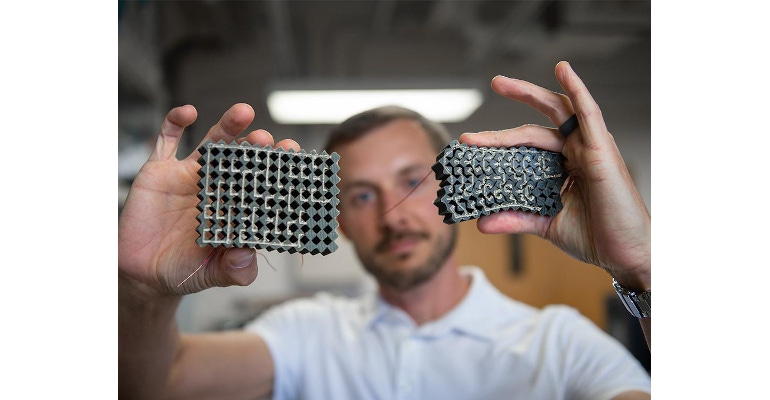New Material Is Capable of ‘Thinking’
Reconfigurable integrated circuits give a polymer material the ability to process sensory information and react to external stimuli similarly to humans.
September 9, 2022

Researchers have developed a material that can process certain types of external stimulation into “thought” similar to that of a human brain, they said.
Collaborators from Penn State and the U.S. Air Force—led by principal investigator and Professor of Mechanical Engineering Ryan Harne—developed the soft, polymer material, which functions using a reconfigurable alternative to integrated circuits that are key to processing information, they said. Integrated circuits can compute signals and information, which is scientists' realization of information processing similar to the brain's role in the human body, researchers said. Until now, integrated circuits primarily have been used to process data in silicon semiconductors, they added.
Harne’s team has now used integrated circuits in a soft polymer material that acts like a brain that can receive and process digital strings of information, resulting in new sequences of digital information that can control reactions, Harne said.
“We have created the first example of an engineering material that can simultaneously sense, think, and act upon mechanical stress without requiring additional circuits to process such signals,” he said in a story posted to Penn State's site.
How the Material Works
Researchers built upon previous work to develop the novel material, which includes reconfigurable circuits that can realize combinational logic. The team had already developed a soft, mechanical metamaterial that can “think” about how forces are applied to it and respond using programmed materials, which was outlined in a paper in Nature Communications last year. That material, however, could only operate on binary input-output signals, not compute high-level logical operations, researchers said.
The new material goes much further in functionality thanks to the inclusion of reconfigurable circuits, they said. The circuits give it the ability to respond to external stimuli by translating the input into electrical information that is then processed to create output signals. For example, the material can use mechanical force to compute complex arithmetic or detect radio frequencies to communicate specific light signals, Harne said. These are just two of the many possibilities for the material given that integrated circuits can be programmed to perform numerous tasks, he said.
“We discovered how to use mathematics and kinematics—how the individual constituents of a system move—in mechanical-electrical networks,” Harne said in the story. “This allowed us to realize a fundamental form of intelligence in engineering materials by facilitating fully scalable information processing intrinsic to the soft material system.”
Material ‘Thinks’ Like a Human
The material uses a similar “thinking” process as humans when it comes to sensory information, Harne explained. While our reactions to external stimuli may seem automatic, the process requires nerves in the body to digitize sensory information so that electrical signals can travel to the brain. Once the brain receives this informational sequence, it assesses it and tells the body how to react, which is what becomes automatic or reflexive movement.
“What makes humans smart is our means to observe and think about information we receive through our senses, reflecting on the relationship between that information and how we can react,” Harne said in the story.
For materials to process and think about information in a similar way, they must perform the same intricate internal calculations, he said. Thus, when the researchers subject their engineered material to mechanical information—i.e., applied force that deforms the material—it digitizes the information to signals that its electrical network can advance and assess.
Researchers published a paper on their work in the journal Nature.
Potential applications for the material include the creation of autonomous search and rescue systems or even bio-hybrid materials that can identify, isolate, and neutralize airborne pathogens.
Researchers plan to further evolve the material to process visual information in a similar way to how it currently processes physical signals, Harne explained.
“We are currently translating this to a means of ‘seeing’ to augment the sense of ‘touching’ we have presently created,” he said in the story. “Our goal is to develop a material that demonstrates autonomous navigation through an environment by seeing signs, following them and maneuvering out of the way of adverse mechanical force, such as something stepping on it.”
About the Author(s)
You May Also Like

.png?width=300&auto=webp&quality=80&disable=upscale)
